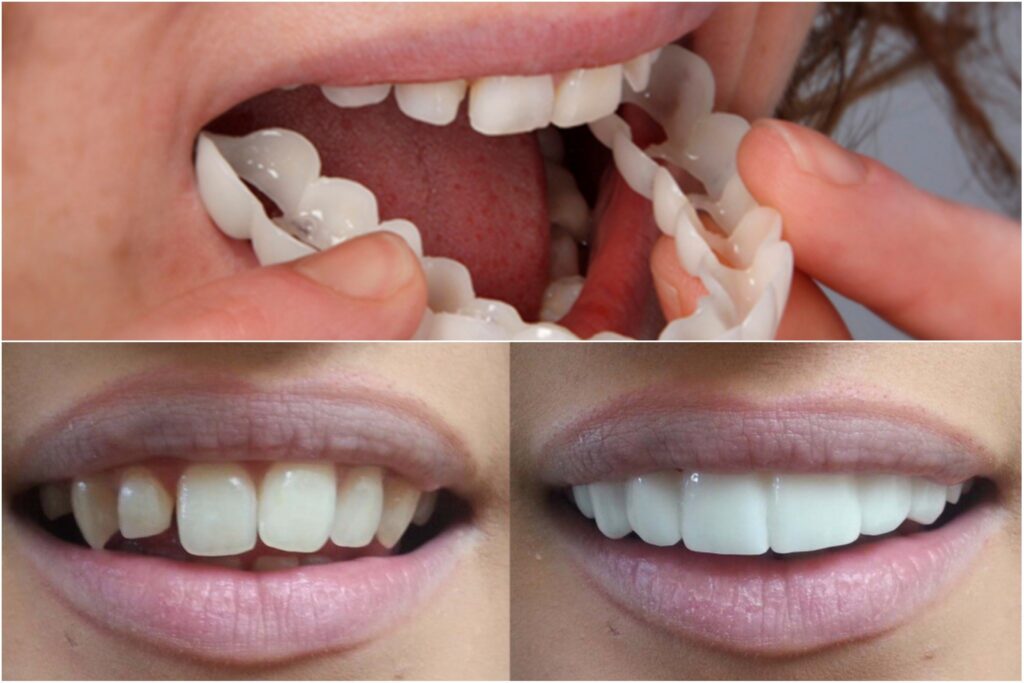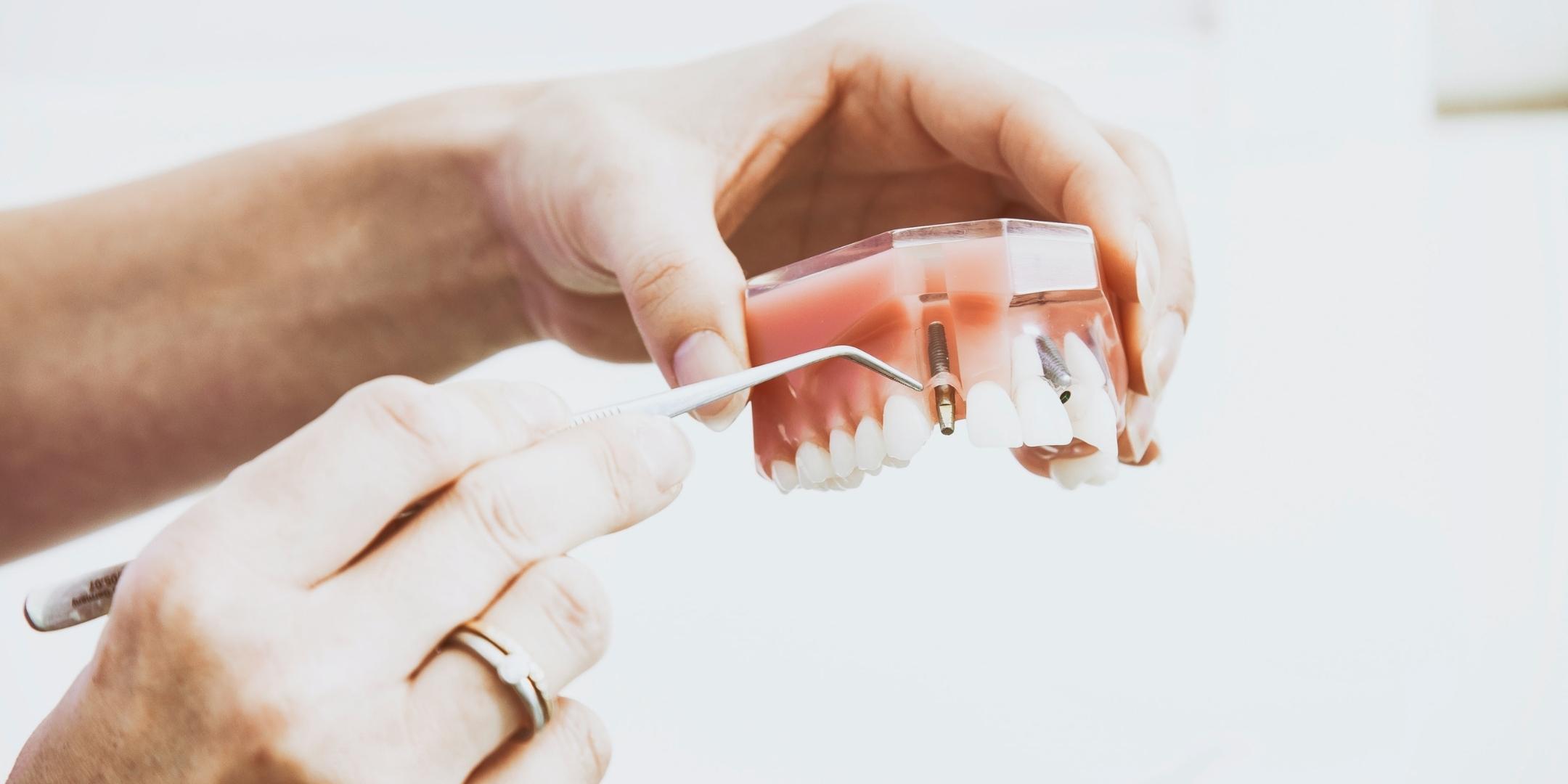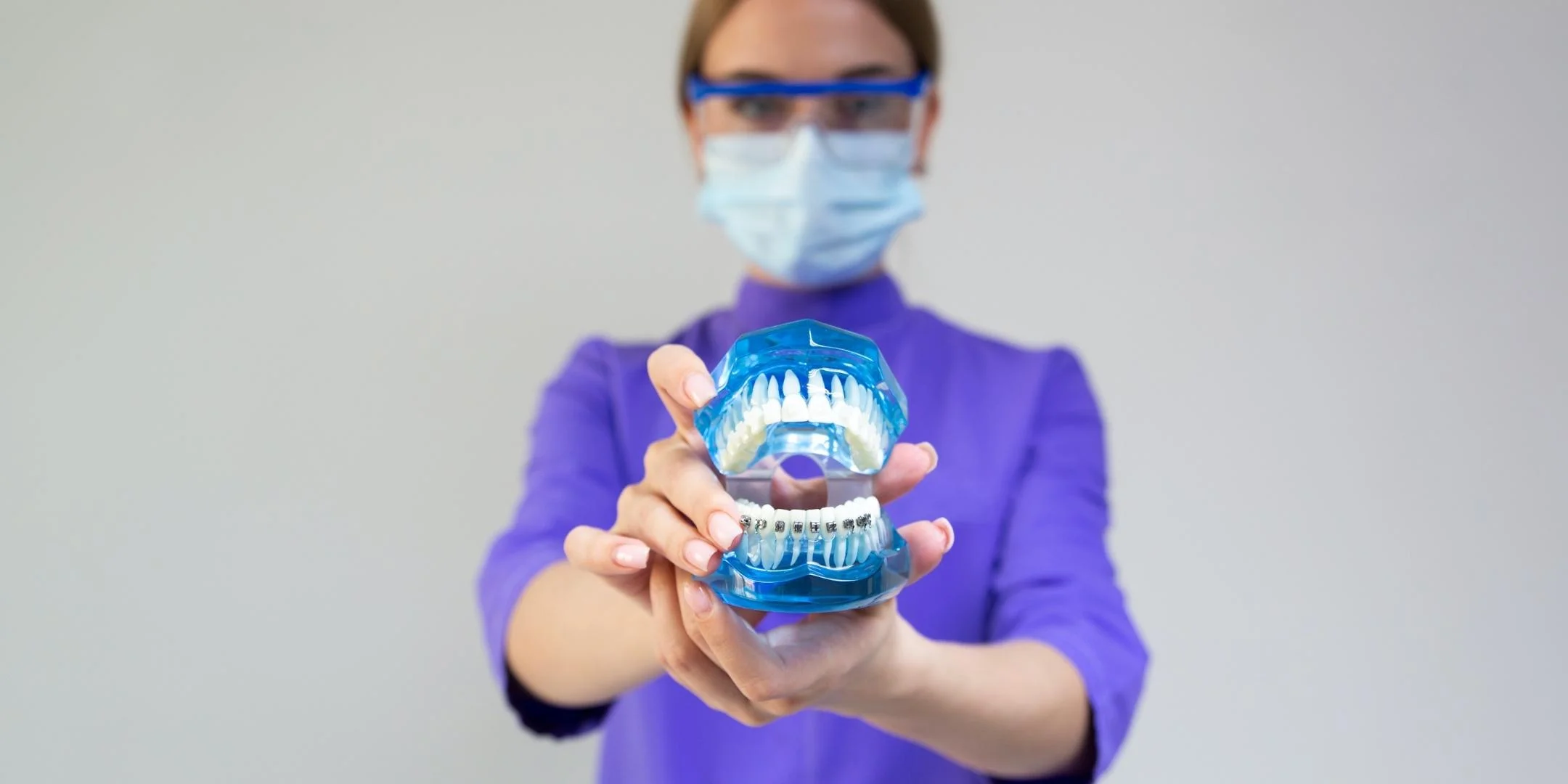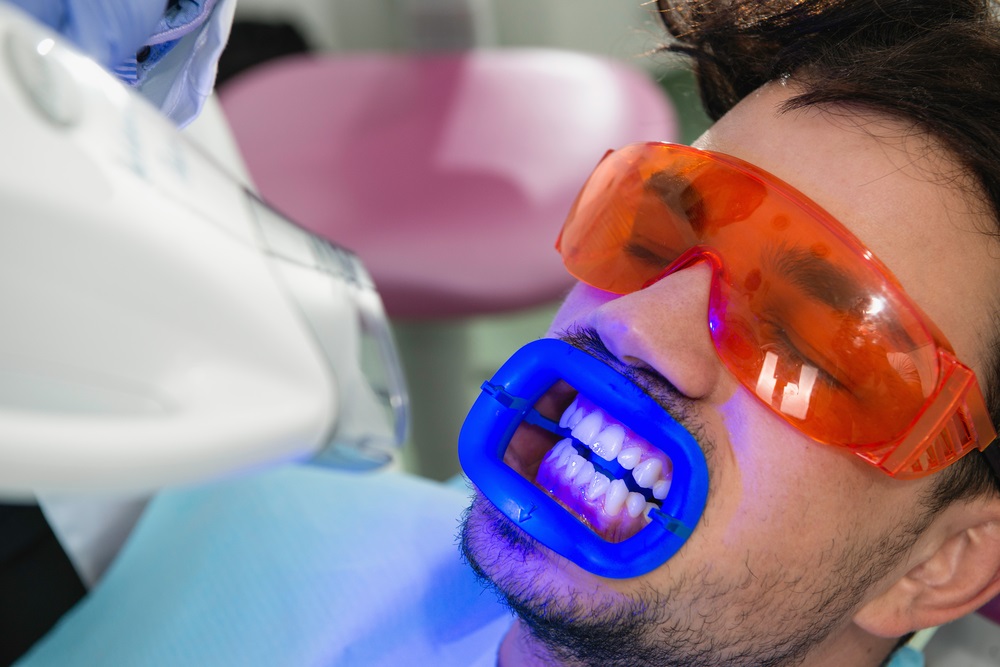- Snap-On Smile is a noninvasive removable dental arch that snaps over existing teeth.
- This appliance is less expensive than other procedures, and offers a temporary solution to cosmetic dental issues.
- While porcelain veneers are more expensive, they are also permanent, more durable, and stain-resistant.
What is Snap-On Smile?
A removable cosmetic dental arch that snaps over existing teeth, Snap-On Smile is similar in shape to a retainer and does not intrude on the gums or cover the roof of the mouth.
Your dentist will create a mold of your teeth and model the Snap-On Smile to fit your mouth exactly. Snap-On Smile hides uneven or crooked teeth, gaps between teeth, and cracks or stains in the enamel. This dental appliance may serve several purposes, depending on your needs. It could be a pure cosmetic enhancement, a removable partial denture, or a provisional implant (a stop-gap before a permanent dental implant).
Technically, you can eat and drink while wearing your Snap-On Smile (more on this below), but there is an adjustment period since it is slightly bulkier than the actual teeth.

The Snap-On Smile procedure
Getting a Snap-On Smile requires two appointments. First, your dentist will assess your teeth and determine whether or not you are a good candidate. If you are, impressions will be made of your teeth and you will then test a preview of the design– either through digital smile analysis software or a mock-up wax cast made from the impressions.
Once you’re satisfied with your future new look, your dentist will send off your impressions to the lab to create your Snap-On Smile. A few days after the lab receives your impressions, your Snap-On Smile will arrive. You will have a second appointment with your dentist to ensure it fits properly and to make minor adjustments, if necessary.
To aid in longevity, Snap-On Smile should be cleaned each time you remove it, usually at the end of the day. The product comes with a special cleaning solution and you can continue to buy refills through your dentist.
Since the device can trap food, debris, and bacteria against your teeth, it’s very important to take care of your teeth and gums to prevent decay. Brush your teeth twice a day with fluoride toothpaste, floss once a day, cut down on sugary foods and drinks, and have regular dental checkups.
Can you eat or drink with Snap-On Smile?
While you can technically eat and drink while wearing your Snap-On Smile, the manufacturer warns against doing so while chewing gum or eating sticky foods. And drinks such as coffee, wine or soda can cause the resin to darken.
Some dentists even advise against eating at all while wearing the Snap-On Smile, since hard or crunchy foods can wear down the product prematurely and the arch can trap food, leading to tooth decay.
Who is a good candidate?
Snap-On Smile may be a good option for those who can’t afford more extensive dental work at the present time, but who would still like to feel confident about their smiles.
This dental appliance can also serve as a quick temporary aesthetic enhancement. Let’s say you have an upcoming big event — perhaps you are a member of a wedding party — and you don’t have time to research and plan a permanent procedure. This is a quick solution that will allow you to flash a beautiful smile for the wedding photos.
Snap-On Smile can be used to cover a partially missing dental arch (such as missing front teeth). While it offers an alternative to standard partial dentures, it can’t replace full dentures, as teeth are required for the device to fit over.
Although Snap-On Smile is made of a durable resin, the product is not recommended for patients who grind or clench their teeth as this can cause the product to crack or break.
It’s important to note that while Snap-On Smile covers and hides dental problems, it doesn’t actually fix them — the product should not be seen as an alternative to braces or other corrective procedures.
“Snap-On Smile covers issues like spacing or misalignment, staining or missing teeth, but it doesn’t provide the long-term fix that more permanent solutions can give you,” confirms Dr. Bobbi Stanley, who has been practicing dentistry in North Carolina for more than 20 years.
“It can be a wonderful alternative for patients who aren’t candidates for bridges, implants or veneers or who cannot afford it — but it’s not going to fix your teeth!”
Pros of Snap-On Smile
The procedure is painless, and requires no shots, anesthesia, drilling, or downtime. Unlike other procedures, such as dental veneers, Snap-On Smile does not require the removal of any tooth enamel. The procedure is also completely reversible; simply pop it out and you’re back to your original teeth.
Snap-On Smile comes with a 12-month limited warranty that covers manufacturing defects.
Cons of Snap-On Smile
Even with proper daily care, your Snap-On Smile only lasts between two and five years — less than most other dental products such as dentures and veneers.
The dental arch is a single piece of resin, so there are no gaps between the teeth like there would be naturally (or even with veneers). This can be a tip-off that your teeth are fake.
Depending on the style and shade, Snap-On Smile can look good — maybe a little too good. Certain models appear downright artificial, with teeth so straight and/or white they’re obviously fake, so carefully preview the intended design and make sure you’re happy with it.
What is the cost of Snap-On Smile?
The cost of Snap-On Smile varies depending on whether you get a full or a partial arch, and even from provider to provider within the same area.
One full arch may cost anywhere from $1,000 to $3,500. As this device is generally used as a cosmetic enhancement, it is not covered by insurance.
Comparison to porcelain veneers
Porcelain veneers are thin shells of porcelain that are bonded to the front of your teeth (so you don’t have to worry about them popping out of your mouth.) Just like Snap-On Smile, veneers usually take only two dental appointments. However, veneers last much longer—up to 10 years.
Dental porcelain is also extremely stain resistant, so your smile stays whiter for longer. You would clean veneers the same way as you would brush your teeth normally, so they’re very low maintenance.
“Snap-On Smile is not an alternative to traditional porcelain veneers. It’s a temporary fix,” Dr. Stanley emphasizes. “Because [Snap-On Smile] goes over the teeth, they can look fuller. This is a plus for some people, but most patients want a natural smile and that can be challenging to achieve with Snap-On Smile. It will stain, chip, and break over time, so you’ll need to replace it or upgrade to a permanent fix.”
It can be frustrating to contend with dental problems. Keep in mind that while Snap-On Smile may cover up some issues, it won’t address them all, especially not the root causes.









